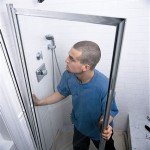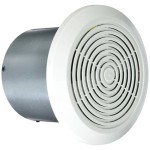Delta Bathroom Faucet Aerator Replacement: A Comprehensive Guide
The aerator is a vital component of a bathroom faucet, responsible for mixing air with water to create a smooth, non-splashing stream. Over time, mineral deposits, sediment, and other debris can accumulate in the aerator, reducing its efficiency and affecting water flow. Replacing a Delta bathroom faucet aerator is a straightforward task that can improve water pressure, reduce water consumption, and enhance the overall functionality of the faucet. This article provides a comprehensive guide on how to replace a Delta bathroom faucet aerator, covering the necessary tools, step-by-step instructions, and troubleshooting tips.
Before commencing the replacement process, it is crucial to identify the specific Delta faucet model. Delta offers a wide variety of faucet designs, and aerator replacement methods may vary slightly depending on the model. The faucet model number is typically located on a sticker or engraved on the faucet body, under the sink, or in the original product documentation. Identifying the model number will allow for the acquisition of the correct replacement aerator and specific installation instructions, if available.
Tools and Materials Required
Successfully replacing a Delta bathroom faucet aerator requires the following tools and materials:
- Replacement Aerator: Obtain the correct aerator for the specific Delta faucet model. These can be purchased at hardware stores, plumbing supply stores, or online retailers.
- Aerator Removal Tool or Adjustable Wrench: An aerator removal tool, often a small plastic or metal key, is designed to fit the aerator and facilitate its removal. An adjustable wrench can also be used, but care must be taken to avoid scratching the faucet finish.
- Soft Cloth or Towel: To protect the faucet finish from scratches during the removal and installation process.
- Vinegar or Lime Scale Remover: For soaking the old aerator and loosening mineral deposits.
- Small Brush or Toothpick: For cleaning debris from the faucet threads.
- Plumber's Tape (Optional): If the new aerator does not include a rubber washer or if the existing washer is damaged.
Gathering these tools and materials before starting the replacement process will ensure a smooth and efficient experience.
Step-by-Step Aerator Replacement Procedure
The following steps outline the general procedure for replacing a Delta bathroom faucet aerator. Refer to the specific instructions provided with the replacement aerator or the faucet model's documentation for any model-specific variations.
- Shut Off the Water Supply: Locate the shut-off valves underneath the sink and turn them clockwise to completely shut off the water supply to the faucet. This prevents water from flowing during the aerator replacement process.
- Protect the Faucet Finish: Place a soft cloth or towel around the faucet spout to protect the finish from scratches during the removal process.
- Remove the Old Aerator: Insert the aerator removal tool into the slots or notches on the aerator. If using an adjustable wrench, carefully adjust the wrench to fit the aerator. Gently turn the aerator counterclockwise to loosen it. If the aerator is tightly stuck, apply a small amount of vinegar or lime scale remover around the aerator and let it sit for a few minutes to help dissolve mineral deposits.
- Inspect the Faucet Threads: Once the old aerator is removed, inspect the faucet threads for any mineral deposits, sediment, or debris. Use a small brush or toothpick to carefully clean the threads.
- Prepare the New Aerator: Ensure the new aerator is the correct model and includes all the necessary components, such as a rubber washer or O-ring. If the aerator does not include a washer or the existing washer is damaged, wrap a small amount of plumber's tape around the faucet threads to create a watertight seal.
- Install the New Aerator: Carefully insert the new aerator into the faucet spout, aligning the threads. Turn the aerator clockwise by hand until it is snug.
- Tighten the Aerator: Using the aerator removal tool or adjustable wrench, gently tighten the aerator. Avoid over-tightening, as this could damage the aerator or the faucet.
- Turn On the Water Supply: Slowly turn the shut-off valves counterclockwise to turn the water supply back on.
- Check for Leaks: Inspect the area around the aerator for any leaks. If leaks are present, tighten the aerator slightly or re-apply plumber's tape to the threads.
- Test the Aerator: Turn on the faucet and observe the water flow. The water should flow smoothly and without splashing.
By following these steps carefully, a Delta bathroom faucet aerator can be replaced efficiently and effectively.
Troubleshooting Common Issues
While the aerator replacement process is generally straightforward, certain issues may arise. Here are some common problems and their potential solutions:
- Aerator Stuck and Difficult to Remove: If the aerator is tightly stuck, apply a generous amount of vinegar or lime scale remover around the aerator and let it soak for a longer period, such as overnight. The acidic properties of vinegar can help dissolve mineral deposits and loosen the aerator. Alternatively, a penetrating oil can be used.
- Stripped Aerator Slots or Notches: If the slots or notches on the aerator are stripped, making it difficult to grip with the removal tool, use a rubber band or a piece of cloth to provide extra grip. Wrap the rubber band or cloth around the aerator and then use the removal tool or wrench to turn it. If this method fails, carefully use a pair of pliers to grip the aerator and turn it counterclockwise. Be cautious not to damage the faucet finish.
- Leaks After Installation: If leaks persist after installing the new aerator, ensure the aerator is properly tightened. If the leak continues, remove the aerator and inspect the rubber washer or O-ring for any damage. Replace the washer or O-ring if necessary. Alternatively, apply a fresh layer of plumber's tape to the faucet threads.
- Reduced Water Flow After Replacement: If the water flow is reduced after replacing the aerator, check the new aerator for any obstructions or debris. Clean the aerator thoroughly. If the problem persists, the issue may be related to low water pressure in the plumbing system or a partially clogged faucet cartridge.
- Incorrect Aerator Size: Always verify the aerator size before purchase and installation. An incorrectly sized aerator will not fit properly and can lead to leaks or damage to the faucet. Refer to the faucet model number and consult the manufacturer's specifications or a plumbing professional to determine the correct aerator size.
Addressing these common issues promptly can ensure a successful aerator replacement and optimal faucet performance. Seeking professional assistance from a qualified plumber is recommended for complex issues or if uncertainty exists regarding any aspect of the replacement process.
Regular maintenance of the bathroom faucet aerator can extend its lifespan and prevent the accumulation of mineral deposits and debris. Periodically removing and cleaning the aerator, typically every six months to a year, can help maintain optimal water flow and prevent the need for frequent replacements. Soaking the aerator in vinegar or a lime scale remover can effectively dissolve mineral deposits and restore its functionality.
The frequency of aerator cleaning depends on the water quality in the area. Hard water, which contains high levels of minerals such as calcium and magnesium, can lead to more rapid mineral buildup. In areas with hard water, more frequent aerator cleaning may be necessary. Conversely, in areas with soft water, aerator cleaning may be required less frequently.
In addition to regular cleaning, consider installing a water softener to reduce the mineral content of the water supply. Water softeners can significantly reduce the accumulation of mineral deposits in plumbing fixtures, including faucet aerators, extending their lifespan and improving their performance. Water softeners can also benefit other appliances and fixtures in the home, such as water heaters, washing machines, and dishwashers.
When selecting a replacement aerator, consider the desired water flow rate. Aerators are available in various flow rates, typically measured in gallons per minute (GPM). Lower flow rates can conserve water, while higher flow rates may provide a more forceful stream. Choosing an aerator with a flow rate that meets the user's needs and preferences is important. Some aerators also feature multiple flow settings that can be adjusted to optimize water usage.
Delta faucets often utilize proprietary aerator designs, so it is essential to purchase a genuine Delta replacement aerator to ensure proper fit and performance. Aftermarket aerators may not meet the manufacturer's specifications and could lead to leaks or reduced water flow. Genuine Delta aerators are typically available at hardware stores, plumbing supply stores, and online retailers. Verify compatibility by checking the faucet model number and consulting the manufacturer's documentation.
Properly disposing of the old aerator is also essential. Do not simply discard the aerator in the trash. Instead, recycle the aerator if possible. Many metal components of the aerator can be recycled, reducing waste and conserving resources. Check with local recycling centers or waste management facilities to determine the appropriate disposal method for the old aerator.
Replacing a Delta bathroom faucet aerator is a relatively simple and cost-effective maintenance task that can significantly improve the functionality and efficiency of the faucet. By following the steps outlined in this guide and addressing any potential issues promptly, homeowners can ensure optimal water flow, reduce water consumption, and extend the lifespan of their faucets.

Aerator 2 Gpm In Chrome Rp32529 Delta Faucet

Aerator In Chrome Rp46827 Delta Faucet

Aerator Rp70191 Delta Faucet

Delta Rp76076 Aerator And Wrench Build Com

Aerator Water Efficient 1 5 Gpm Rp52216 Delta Faucet

Aerator Porter Windemere 2h Kitchen In Stainless Rp61342ss Delta Faucet

Neoperl 13 16 In 27 Pca 1 2 Gpm Delta Water Saving Aerator With Key 37 0356 98 The Home

Cache Aerators Recessed Or Faucet Faqs

Aerator Water Efficient 1 2 Gpm In Chrome Rp61340 Delta Faucet

Delta Lahara Aerator Water Efficient W Wrench 1 5 Gpm Rp51345 Com







